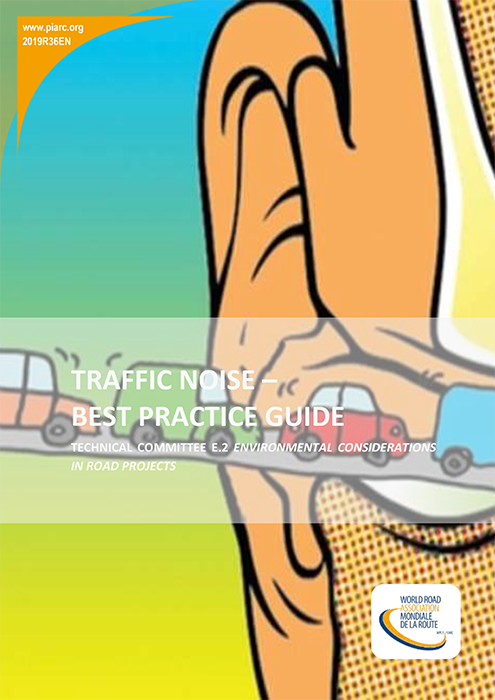Traffic Noise – Best Practice Guide - Technical Report

In recent years, knowledge about the health effects of traffic noise has grown substantially. Many studies have found that long-term exposure to traffic noise is associated with various health impacts such as sleep disturbance, cardiovascular disease and depression. While there remain knowledge gaps concerning the risk for particular noise profiles, there is sufficient evidence to suggest that a large proportion of people living within major urban centres is at risk due to excessive noise level exposures. In addition, there appears to be a city size effect: the proportion of the population negatively affected by noise increases with city size.
Traffic noise is estimated to cost the European Union economy around EUR 40 billion per year, with this cost anticipated to increase as the proportion of population exposed to excess traffic noise increases over time, as cities increase in size and urbanisation increases population density. Currently, close to half of all Europeans are regularly exposed to traffic noise levels that are potentially dangerous to health.
With changes in automotive technology and the rapid deployment of intelligent transport systems and automated vehicles, there is an optimistic view that the burden of traffic noise on the community will decrease. Battery powered vehicles for example, represent the most developed of the electric vehicle technologies, yet have only 2 to 3% penetration in almost all markets, apart from Norway. Similarly, the future of transportation is clearly focused on the role of automated vehicles which are predicted to run more efficiently and are widely assumed to deliver improved safety outcomes. Nevertheless, since the most significant source of traffic noise is the tyre-road interface, the deployment of electric and/or automated vehicle is not expected to reduce traffic noise.
The network-wide benefits of automated vehicles mask some potentially significant challenges. Automated vehicles have the potential to promote population dispersion by reducing the inconvenience of long commutes. The foreseeable future, therefore, is not necessarily less traffic noise, but more people over greater areas likely to be exposed to traffic noise.
Consequently, the need to manage and reduce traffic noise is even more
important today. Increasing urbanisation coupled with new technology means that
the complex interactions between transport, land use planning and public health
outcomes must be assessed to enable effective strategies or interventions.
This Best Practice Guide provides a summary of strategies and a suite of tools that are available to national road agencies to respond to traffic noise. It summarises the latest research on the health and economic impacts of traffic noise and using a range of case studies, explains the various mitigation measures available to significantly reduce noise emissions. Examples include planning (e.g. buffers), design of roads (cuttings, tunnels and grade), use of low noise pavement or quieter tyres, installation of barriers, as well as legislative requirements to control noise from vehicle tyres or ineffective mufflers.
Information sheet
- Date: 2019
- Author(s): Comité technique / Technical Committee / Comité Técnico E.2 Prise en compte de l'environnement dans les projets routiers et l'exploitation / Environment Considerations in Road Projects and Operations / Consideraciones Medioambientales en Proyectos y Explotación de Carreteras
- Domain(s): Environment / Urban Mobility
- Type: Technical Report
- PIARC Ref.: 2019R36EN
- ISBN: 978-2-84060-571-3
- Number of pages: 214